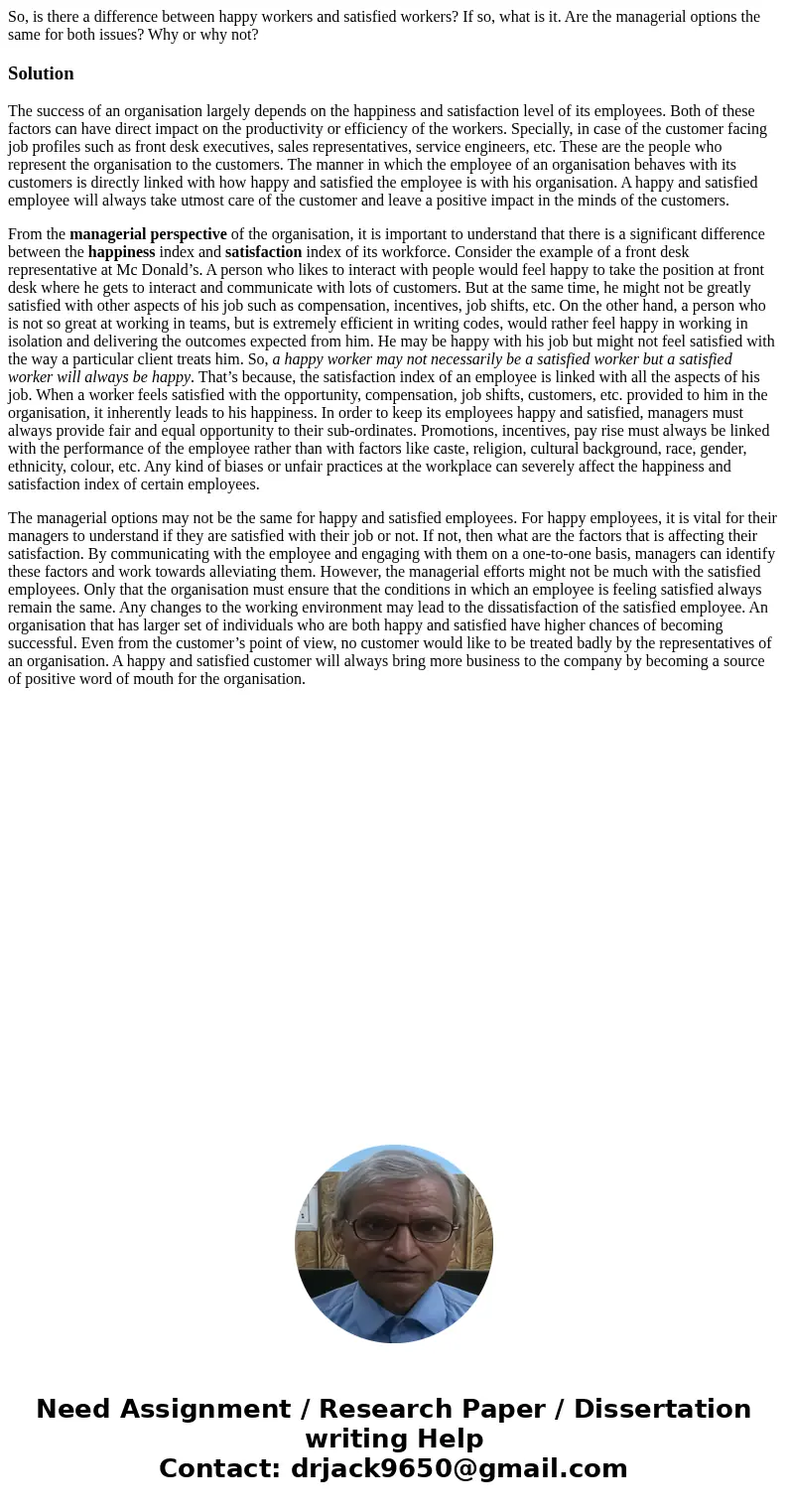So is there a difference between happy workers and satisfied
So, is there a difference between happy workers and satisfied workers? If so, what is it. Are the managerial options the same for both issues? Why or why not?
Solution
The success of an organisation largely depends on the happiness and satisfaction level of its employees. Both of these factors can have direct impact on the productivity or efficiency of the workers. Specially, in case of the customer facing job profiles such as front desk executives, sales representatives, service engineers, etc. These are the people who represent the organisation to the customers. The manner in which the employee of an organisation behaves with its customers is directly linked with how happy and satisfied the employee is with his organisation. A happy and satisfied employee will always take utmost care of the customer and leave a positive impact in the minds of the customers.
From the managerial perspective of the organisation, it is important to understand that there is a significant difference between the happiness index and satisfaction index of its workforce. Consider the example of a front desk representative at Mc Donald’s. A person who likes to interact with people would feel happy to take the position at front desk where he gets to interact and communicate with lots of customers. But at the same time, he might not be greatly satisfied with other aspects of his job such as compensation, incentives, job shifts, etc. On the other hand, a person who is not so great at working in teams, but is extremely efficient in writing codes, would rather feel happy in working in isolation and delivering the outcomes expected from him. He may be happy with his job but might not feel satisfied with the way a particular client treats him. So, a happy worker may not necessarily be a satisfied worker but a satisfied worker will always be happy. That’s because, the satisfaction index of an employee is linked with all the aspects of his job. When a worker feels satisfied with the opportunity, compensation, job shifts, customers, etc. provided to him in the organisation, it inherently leads to his happiness. In order to keep its employees happy and satisfied, managers must always provide fair and equal opportunity to their sub-ordinates. Promotions, incentives, pay rise must always be linked with the performance of the employee rather than with factors like caste, religion, cultural background, race, gender, ethnicity, colour, etc. Any kind of biases or unfair practices at the workplace can severely affect the happiness and satisfaction index of certain employees.
The managerial options may not be the same for happy and satisfied employees. For happy employees, it is vital for their managers to understand if they are satisfied with their job or not. If not, then what are the factors that is affecting their satisfaction. By communicating with the employee and engaging with them on a one-to-one basis, managers can identify these factors and work towards alleviating them. However, the managerial efforts might not be much with the satisfied employees. Only that the organisation must ensure that the conditions in which an employee is feeling satisfied always remain the same. Any changes to the working environment may lead to the dissatisfaction of the satisfied employee. An organisation that has larger set of individuals who are both happy and satisfied have higher chances of becoming successful. Even from the customer’s point of view, no customer would like to be treated badly by the representatives of an organisation. A happy and satisfied customer will always bring more business to the company by becoming a source of positive word of mouth for the organisation.

 Homework Sourse
Homework Sourse